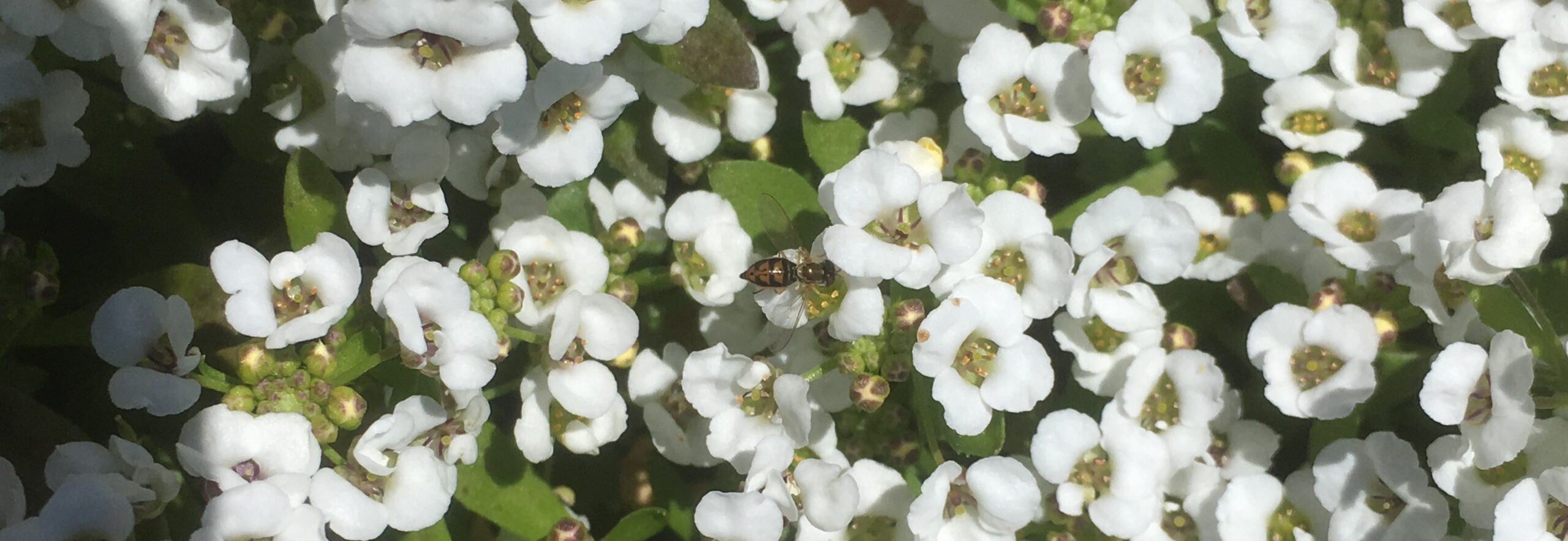
Use of high tunnels in the Northeast to extend the growing season has increased over the past decade aided in part by NRCS incentive programs. These structures protect crops from extreme and unpredictable weather resulting from changing climate. High tunnel environments also favor pest outbreaks. Aphids, spider mites and thrips are the most challenging pests to manage in these protected spaces and often cause significant damage and economic loss. Successful biological control of these pests requires establishment of natural enemies in a timely manner. However, releases of commercially reared natural enemies are costly. Habitat/insectary plants promote the establishment of wild natural enemy populations in field agriculture serving a vital role in conservation biological control. Their use by growers in and around high tunnels is limited, especially in the Northeast. To encourage greater adoption, growers need evidence habitat plantings work and guidelines for their use. Alyssum has shown great promise as an insectary/habitat plant in a variety of agroecosystems. The goal of this project is to evaluate alyssum habitat plantings as an integrated pest management (IPM) strategy to attract and sustain natural enemies of high tunnel vegetable crops in Vermont. Use of alyssum habitat plants in the unused space between high tunnels is an innovative way for growers to save money by attracting wild natural enemies that provide pest management services. By establishing the strips outside, there would be no loss of productive growing space within tunnels. These habitat plantings would result in less need to purchase natural enemies. It will also reduce the need for pesticide applications thus increasing overall ecosystem health by protecting non-target organisms (i.e., bee pollinators, farmworkers, consumers).
Check back for project updates starting spring 2024!
This work is supported by a USDA Natural Resources Conservation Service, Vermont Conservation Innovation Grant Agreement Number: NR231644XXXG003. The findings and conclusions in this project website have not been formally disseminated by the U. S. Department of Agriculture and should not be construed to represent any agency determination or policy.
